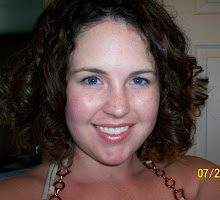I have so many people tell me that they won't touch a project that includes applique! (The "A-word") I used to be the same way, but I am working through it. This year, especially, I seem to be finding all kinds of quilts that I love but that also include some applique. I love them so much, I am conquering my fear, and I wish that others would try it too! Even if you don't want to do hand-work, applique is not out of reach. Many of my favorite quilts include some applique mixed with piecing. If you refuse to try applique, you are denying yourself so many beautiful projects!
The easiest method of applique, especially if you don't like to do hand-work, is fusible applique. This involves using a fusible webbing product like steam-a-seam, or heat-n-bond. These products are sold by the yard, and they come in different thicknesses. I prefer the heat-n-bond lite. Be careful not to mistakenly use the heavy weight, or your quilt will look like Monte's logger pants after he patches them with Tear Mender!
Fusible applique, in my opinion, produces a more rustic, or "country" feel compared to more traditional hand applique methods. I will attempt to explain it here:
Basically, you trace your shapes to the paper side of the fusible, cut 1/4" around each shape, and then iron it to the WRONG side of your fabric. Then, cut out on the line, peel off the paper, and fuse the shape to your quilt by ironing it in place. This does leave raw edges, so it usually requires some sort of finishing stitch around the edge. This is simple enough to do on the machine, but can also be done by hand. Possible stitches are the running stitch, the button hole stitch, and the satin stitch. For details such as eyes, the French Knot is often used. Most of these stitches, aside from the French Knot, can be done with a sewing machine.
A tool that may help to align your pieces on the quilt, before they are ironed in place, is the applique pressing sheet. This is a clear sheet that allows you to place your pattern underneath, line up your shapes, and fuse them together before fusing them on the quilt. This is especially helpful when you have a lot of pieces that overlap. They peel right off the applique sheet when cool, and then are in one, easy to handle, piece to fuse to your quilt.
I used this method to complete my Strawberry Faire quilt, and I will also be using it to make my Garden Friends quilt.
Watch for a later post explaining more about hand applique methods!
Subscribe to:
Post Comments (Atom)





No comments:
Post a Comment